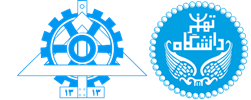Misions and prospects - دانشکده مهندسی نقشه برداری و اطلاعات مکانی geospatialeng
Prospects and mission
School of Surveying and Geospatial Engineering of University of Tehran, according to the vision horizon of 1404 universities, has considered the first place in the level of surveying engineering faculties in the country. Also, in line with the basic and required research of the country as well as the ability to produce and disseminate advanced and required knowledge and technologies and conduct educational activities, a research according to adherence to value principles seeks to train specialized and committed human resources and position. Growing globally.
School of Surveying and Geospatial Engineering of University of Tehran pursues the following in its organizational mission:
Educational missions:
- Training of specialized human resources, in accordance with Islamic and indigenous culture and the needs of society
- Development of interdisciplinary trends and updating of collections, Courses and educational content based on the needs of the country.
- Training specialized creative and thoughtful forces in different geomatics tendencies in order to provide the required manpower of the country.
- Expand public access to training and retraining of engineers using new training technologies.
- Superior educational quality to create a unique learning experience for a faithful, capable, creative, confident, critical, critical and hard-working human resources.
- Update the content, educational processes and curricula to enhance the knowledge,Skills and professional competence required by graduates in line with the latest research achievements.
- Improving content and promoting educational methods and the use of educational technology
- Continuous improvement of educational quality by establishing a system of continuous quality improvement, evaluation models, and promotion of quality-related culture
Research missions:
- Improving the level of research, especially in the field of postgraduate education through the quantitative and qualitative development of scientific products in geomatics.
- Identifying and attracting top talents and creating a suitable research platform for them
- Maintaining the right balance between basic and applied research and targeting financial resources in line with research priorities
- Supporting the publication of research results and the publication of authoritative articles and scientific books, and generally increasing the amount of high-quality and worthy scientific productions
- Entering new fields of knowledge in geomatics through the use of up-to-date scientific resources
- Improving the quality of research resources (laboratories, libraries, etc.)
- Targeting research credits in line with research priorities
